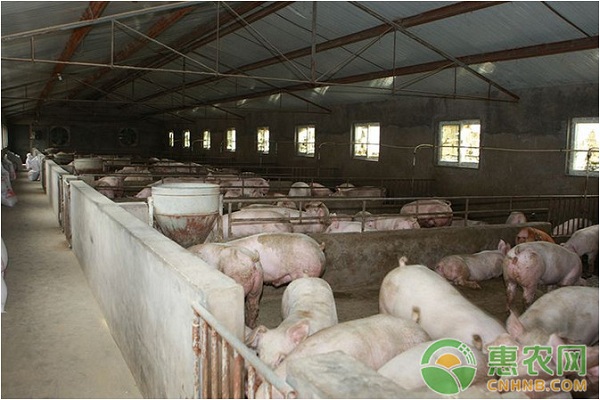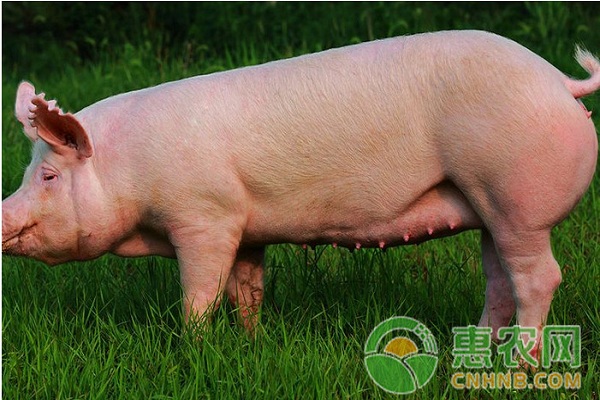In the countryside, the aquaculture industry is particularly numerous, especially the general pig farmers, and now the rural pig farmers are not pigs in small pigs, but there are many small and medium-sized pig farms, even larger areas. So, such a large pig farm, the prevention and control of pig disease is the most important thing! 1 Problems in the prevention and control of epidemic diseases in rural scale pig farms 1.1 Site selection Rural-scale pig farms usually do not carefully consider the site selection process. Scientific planning is not used to blindly select breeding sites. Many large-scale pig farms are established near slaughterhouses or residential areas. There are many environmental traffic and people flow here. More, there will be a lot of noise, and too much domestic garbage will be piled up around the scale pig farm. The sewage debris generated by the slaughterhouse will also pollute the environment of the scale pig farm. There are also some scales. The internal planning of pig farms is not scientific enough. There is no reasonable division of living areas and breeding areas. People and pigs have frequent contact, which increases the probability of occurrence of large-scale pig farm diseases, and is highly prone to epidemic and cross-infection. . 1.2 Pig house layout Before the establishment of a rural-scale pig farm, it is necessary to design the pig house scientifically, so that the layout of the pig house is more reasonable. However, many rural-scale pig farms do not have a reasonable design of the pig house in strict accordance with relevant regulations. Lack of rationality and scientificity, no sound disease prevention and control infrastructure, such as manure treatment facilities, isolation rooms, disinfection facilities, etc. have not been established, in this environment, the pig disease prevention and control work can not be carried out smoothly, The immunity and disease resistance of the herd can not be improved. The quality of the herd is difficult to guarantee. Once the disease is difficult to control, it will bring certain economic losses to the rural pig farm. 1.3 The lack of professionalism in pig raising technology Most of the employees in rural scale pig farms are farmers. Because farmers have lower academic qualifications and different levels of cognition, they did not participate in professional pig breeding technical training in the process of breeding pigs. The awareness of control is not strong. In the process of breeding, the pigs are usually fed according to experience. When the pigs are sick, they are free to use drugs. Not only does it not have an effective treatment effect on the disease, but it can also lead to poisoning of pigs and cause economic losses to farmers. 1.4 Selection is not scientific It is necessary to introduce excellent breeds of pigs to ensure the quality of the herd. At the same time, it is necessary to pay attention to the need to purchase breeding pigs on regular farms. There are animal disease prevention qualification certificates, breeding livestock management licenses and breeding livestock production certificates in regular pig farms. Thereby ensuring the quality of the breeding pigs. However, in order to save input costs, many rural-scale pig farms have purchased pigs from irregular farms. The quality of pigs cannot be guaranteed. The quarantine is not qualified. It is extremely difficult to introduce such pigs into pig farms. Security risks. 1.5 Immunization is not standardized The immunization procedures of some rural scale pig farms are not standardized, and animal immunity fails. In the process of carrying out immunization work, there is no standardized immunization program based on the law of epidemic disease and the actual situation of swine disease, and the immunization work is divided into the scope of vaccination. Most farmers think that it is effective to prevent vaccination of pigs. In the case of epidemic disease, because there is no strict immunization standard, the vaccine is injected into the herd group, and even the expired vaccine is injected, and the immunization fails. In the process of carrying out immunization work, immunization workers did not wear disinfection clothes, wear immunological markers, and record immunization data. Immunization did not play a substantial role. At the same time, rural-scale pig farms did not purchase at the regular veterinary epidemic prevention station when purchasing vaccines. In order to save the cost of immunization, the vaccines with low price and unqualified quality were purchased, and the final immune failure. 1.6 No supporting epidemic prevention facilities There is no disinfection facility at the entrance of the rural scale pig farm and the pig house. The effect of the disease prevention and control of the scale pig farm is not satisfactory, and the chance of infection of the swine epidemic is also improved. Ultraviolet disinfection and disinfection should be established at the doorway of the rural scale pig farm. However, many farmers do not pay much attention to the importance of disinfection work. Even if a disinfection tank is established, the disinfectant and disinfection tank are not replaced in time. Did not play its due role. There are still many pig farms that do not carry out disinfection work. The bacteria and pathogens in the pig house are abundantly raised and attached to the pig house, and the disease may occur at any time. Most of the heads of rural large-scale pig farms are farmers. Farmers' pig-raising expertise is not strong, lack of awareness of disease prevention and control, lack of harmless treatment facilities in pig farms, internal environment of pig farms, drugs, vaccines, etc. Randomly stacked, sewage, sundries, animal waste, sick and dead livestock and poultry can not be effectively treated, greatly increasing the incidence of disease, the spread of the disease. 2 Effective countermeasures for prevention and control of disease in pig farms in rural areas 2.1 Pig site selection and layout should be scientific The location and layout of rural large-scale pig farms can reduce the impact of external environmental factors on the farm, and effectively reduce the incidence of disease and spread of the disease, thus ensuring long-term stable development of large-scale pig farms. When selecting the location of the pig farm, it is necessary to consider the influence of various factors on the farm, such as whether the drainage is convenient, whether the water and electricity are sufficient, whether the ventilation is good, etc., but also must pay attention to the need to establish in the place where the leeward is sunny and the terrain is dry. Large-scale pig farms, with main roads greater than 500m, while away from residential areas, the distance from residential areas is at least more than 1000m, also need to be careful not to establish a large-scale pig farm within 1km around the factory. The layout of the pig farm should be scientific and reasonable. It is necessary to establish an isolation zone, a production zone, a management zone and a living zone. It should be noted that these zones must be separated, and the epidemic prevention forest belts should be established to establish an epidemic barrier on the periphery of the farm. . 2.2 Improve the professional level of breeding The rural veterinary epidemic prevention station should actively publicize the knowledge of animal epidemic prevention, and at the same time carry out professional breeding techniques, animal disease prevention and control technology, scientific breeding technology and other training activities, mobilize the enthusiasm of farmers to participate, and improve farmers' awareness of animal disease prevention and control, thus effectively Conduct disease prevention and control work to achieve good prevention and control effects. 2.3 Self-supporting, all-in, all-out In order to achieve healthy pig breeding in rural scale pig farms, to prevent cross-infection and continuous infection of pigs, it is necessary to adopt self-cultivation, self-supporting, all-in and all-out closed management farming methods. When large-scale pig farms introduce other breeding pigs, due to factors such as irregular purchase channels, the types of pathogens in the farms will increase, and bacterial cross-infection between pigs is prone to occur. It is very difficult to carry out disease prevention and control work. Adopting closed breeding methods that are self-supporting, self-supporting, and all-in and out, can effectively reduce the chance of cross-infection and continuous infection of swine disease. 2.4 Immunological procedures, science and regulation In the process of prevention and control of disease in rural scale pig farms, immunization is one of the important prevention and control measures. It is necessary to formulate scientific and standardized immunization procedures to prevent immune failure. It is necessary to formulate an immunization program based on the history of the swine plague, the occurrence of the epidemic, the prevalence of the epidemic, and the actual situation of the farm, so as to ensure that the immunization procedure meets the needs of the pig farm. At the same time, you must purchase a vaccine at a regular veterinary epidemic prevention station, store the vaccine according to relevant standards, and ensure the quality of the vaccine. Before vaccinating the herd, the health of the herd must first be observed to ensure the effectiveness of the immunization. When vaccinating, follow the standard dosage. Note that the syringe cannot be reused. Other inoculation tools must be strictly disinfected. After the immunization is completed, the pigs should be observed and treated if they are found to be abnormal. 2.5 Improve the pig farm epidemic prevention facilities Rural-scale pig farms need to establish sound epidemic prevention infrastructure, and the pigs have qualified environmental sanitation conditions to fundamentally reduce the incidence of disease occurrence and spread. First of all, it is necessary to establish a disinfection tank and replace the disinfectant regularly; establish an ultraviolet disinfection room to ensure that the ingress and exit personnel can carry out thorough disinfection; pay attention to the disinfection work of the pig house, and regularly disinfect the trough, sink, fence, ground, etc., to ensure The pig house is clean and sterile. If the disease has already occurred, the farm must be thoroughly disinfected daily. In the disinfection work, it is necessary to pay attention to the regular replacement of the disinfectant to ensure the disinfection effect. In the large-scale pig farms, it is necessary to establish a harmless treatment facility and an isolation room. If abnormal pigs are found to be immediately isolated, effective measures should be taken for treatment. For the sick pigs, the harmless treatment pool should be used for standard treatment to avoid the spread of immune diseases. The above are the problems and countermeasures of the prevention and control of the disease in the rural scale of pig farms organized by Huinong.com. Let’s take a look at whether your measures and countermeasures have been done in your farm. For reference, more professional pig farming knowledge is available in Huinong.com! alpha arbutin .kojic acid powder .nmn powder.coenzyme q10 powder. glutathione powder .apigenin powder. aloe vera gel freeze dried powder etc Cosmetic Ingredients,Strawberry Powder,Kojic Acid Powder,Glutathione Powder Youth Biotech CO,. Ltd. , https://www.youtherb.com
